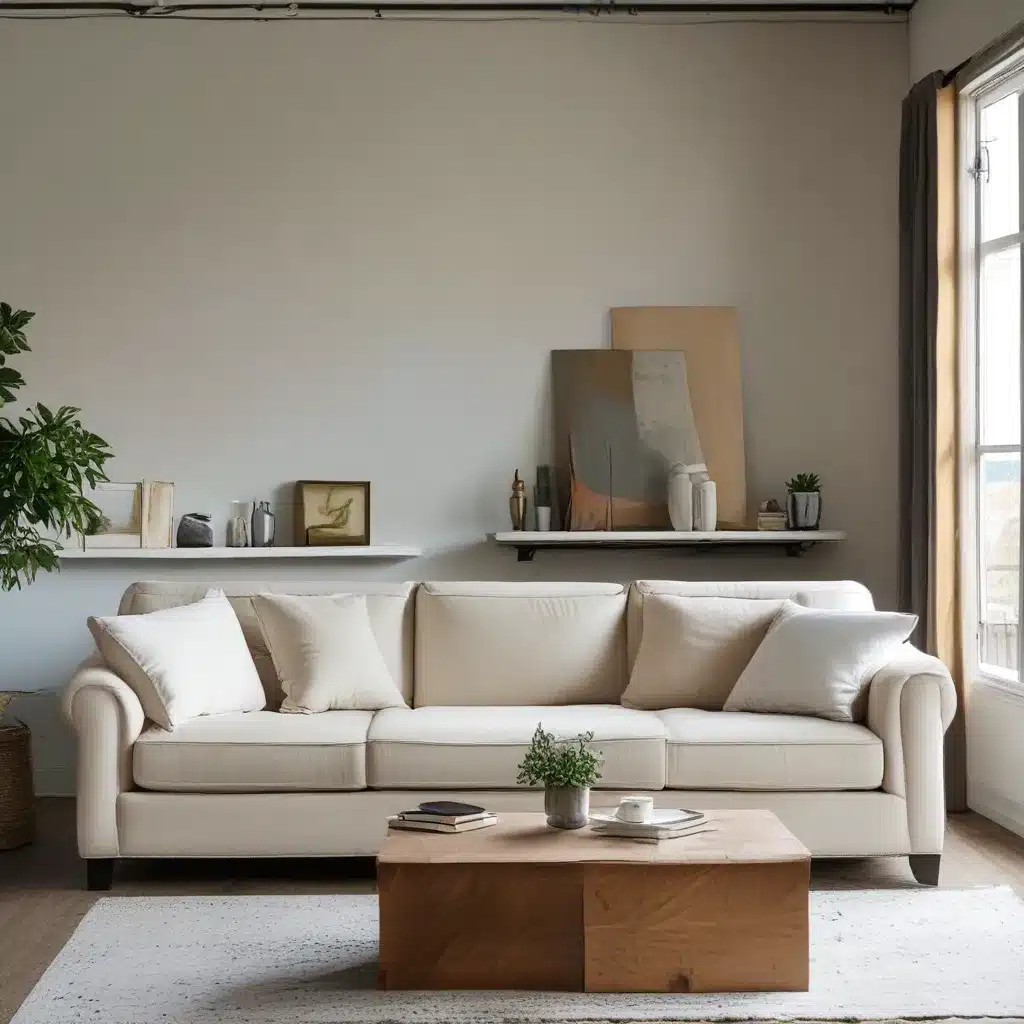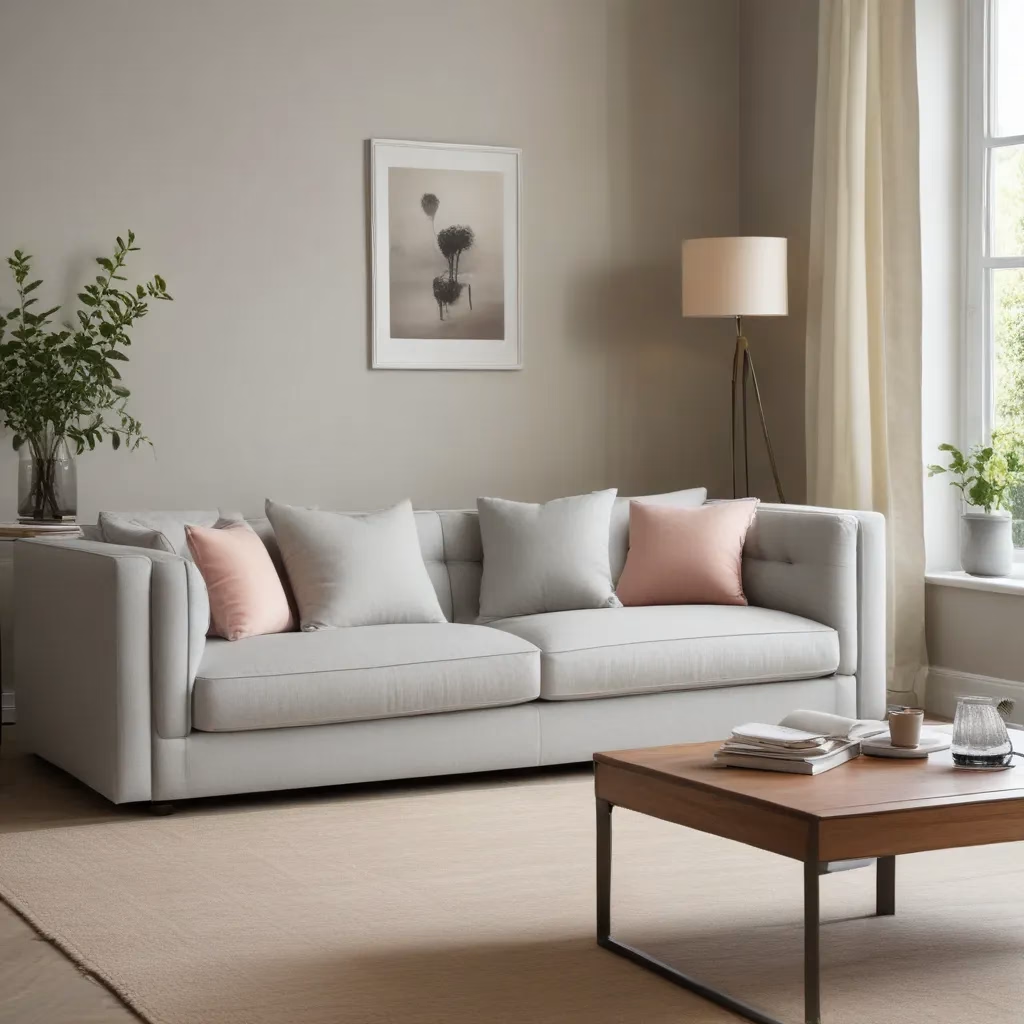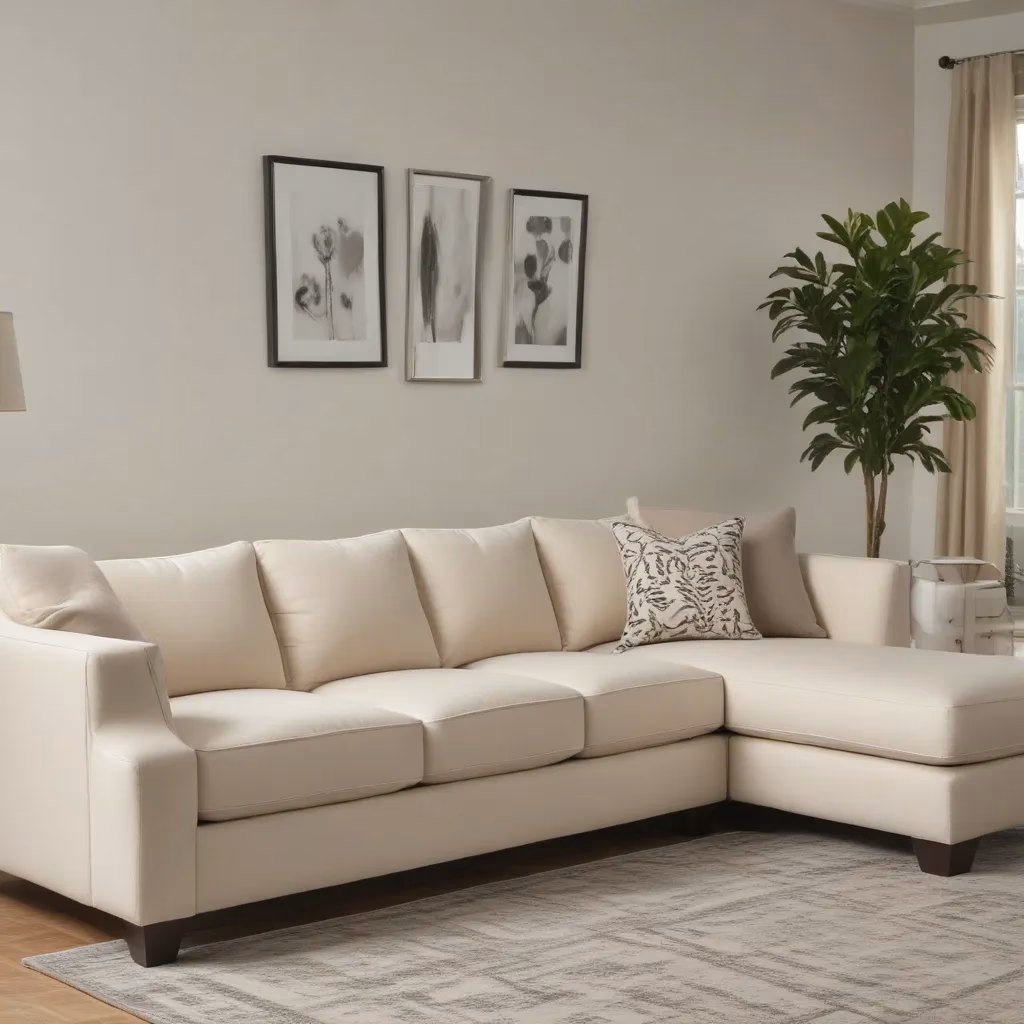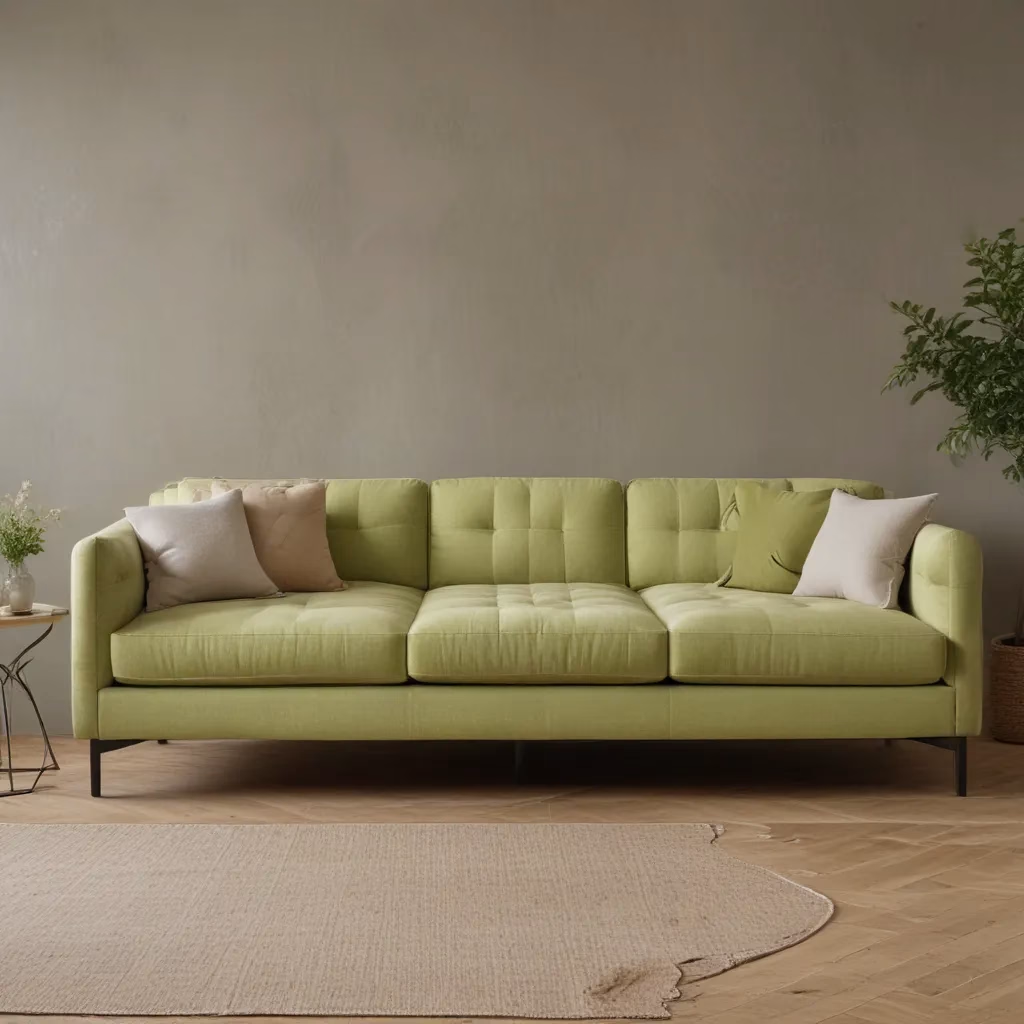Sofa Size: The Goldilocks Dilemma
As a self-proclaimed furniture enthusiast, I’ve had my fair share of sofa-sizing woes over the years. It’s a delicate balancing act – you want a sofa that’s not too big, not too small, but juuust right. Like Goldilocks discovering the perfect porridge, finding the ideal sofa dimensions for your space can feel like a never-ending quest.
But fear not, my friends! I’m here to share my hard-earned lessons on how to perfectly size your new custom sofa. Because let’s be honest, a sofa is the centerpiece of any living room – it sets the tone, anchors the space, and can make or break the entire vibe. You don’t want to end up with a behemoth that dwarfs the room or a measly loveseat that looks like it’s been shrunk in the wash.
So let’s dive in, shall we? Pull up a chair (or should I say, a perfectly sized sofa) and get ready to master the art of sofa selection.
Measure, Measure, Measure
The first and most crucial step in your custom sofa journey is to measure, measure, measure. As the experts at The DIY Playbook say, “Once I added some colorful pillows to the couch it looked so much better. It was then that I realized the power of a good throw pillow.” The same principle applies to the sofa itself – the right dimensions can make all the difference.
Start by taking a good hard look at your living room. Sketch it out on paper if you’re a visual person, noting the room’s dimensions, door and window placements, and any other furniture pieces that need to be accounted for. Then, get out your trusty tape measure and get to work.
Measure the length, width, and depth of the space where your new sofa will live. Don’t forget to factor in any alcoves, nooks, or architectural details that could impact the sofa’s placement. And be sure to leave enough room for people to move around comfortably – you don’t want your guests feeling like they’re navigating an obstacle course.
Once you’ve got those room measurements locked down, it’s time to turn your attention to the sofa itself. Jot down the length, depth, and height you’re envisioning. Remember, these numbers need to work within the confines of your living room, so don’t get too carried away with your dream sofa dimensions just yet.
The Art of Proportions
Now that you’ve got all those numbers swimming around in your head, it’s time to start playing with proportions. This is where the real magic happens, my friends.
Think about the scale of your living room. Is it a cozy, intimate space or a grand, open-concept layout? The sofa you choose should be in harmony with the room’s overall size and feel. As Lana from Lana Red Studio explains, “If you want to re-upholster your sofa you can follow the fabric design steps in this project. For the upholstery, I suggest that you read the Do It Yourself Divas blogpost on this subject, which has an excellent tutorial on how to reupholster your sofa.”
For a smaller living room, you’ll want to opt for a more petite sofa, perhaps in the range of 72-84 inches wide. Anything bigger and you run the risk of overwhelming the space. On the flip side, if you’ve got a sprawling, open-plan layout, you can definitely go bigger – think 90-100 inches wide to create a cozy, inviting seating area.
But width isn’t the only factor to consider. The depth of your sofa is crucial too. A deeper seat, around 40-44 inches, works well in spacious rooms, as it provides ample room to sink in and get comfortable. In tighter quarters, however, you’ll want to scale that down to 36-38 inches to prevent the sofa from dominating the space.
And let’s not forget about height! The ideal sofa height is generally between 30-36 inches, with the higher end of the spectrum working best for more formal, traditional living rooms. If you’re going for a more casual, laid-back vibe, aim for the lower end of the range.
The Cushion Conundrum
Ah, the age-old cushion conundrum – to fluff or not to fluff? It’s a delicate balance, my friends. As The DIY Playbook team advises, “I suggest ditching that insert and then sizing up with a bigger insert. You can use the original pillow insert with a smaller sized cover. Instead of using a 20×20 insert here, I opted for a 22×22 pillow insert. Now the pillow is much fluffier, it fills the cover better, and it looks more expensive.”
The same principle applies to your custom sofa. You want those cushions to have just the right amount of plumpness – not so flat that they look sad and deflated, but not so overstuffed that they look like they’re about to burst at the seams.
The key is to choose cushion inserts that are a few inches larger than the actual cushion cover. This way, you’ll get that luxurious, sink-right-in feel without sacrificing the sofa’s overall proportions. As a general rule of thumb, aim for inserts that are 2-4 inches larger than the cover size.
And don’t forget to factor in the thickness of the cushions too. Taller, more substantial cushions (around 8-10 inches) work best in spacious living rooms, while lower-profile options (6-8 inches) are a better fit for more compact spaces.
Bringing It All Together
Now that you’ve mastered the art of sofa sizing, it’s time to put it all together and find your perfect match. Head on over to Sofa Spectacular, where you can browse their stunning selection of custom sofas and work with their design experts to create the piece of your dreams.
Whether you’re drawn to the clean lines of a mid-century modern marvel or the cozy embrace of a classic chesterfield, Sofa Spectacular has got you covered. And with their made-to-order capabilities, you can rest assured that your new sofa will be tailored to your exact specifications.
So what are you waiting for? Grab your tape measure, channel your inner Goldilocks, and get ready to find the perfect custom sofa that’s just right for your living room. Trust me, your future self (and your guests) will thank you.




